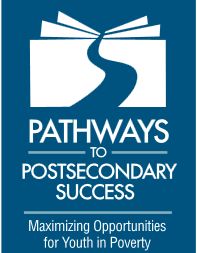
By Daniel Solórzano, Amanda Datnow, Vicki Park, and Tara Watford with Lluliana Alonso, Virginia Bartz, Christine Cerven, Nichole Garcia, Karen Jarsky, Nickie Johnson-Ahorlu, Makeba Jones, Maria Malagon, Jennifer Nations, Kelly Nielsen, Mike Rose, Yen Ling Shek, and Susan Yonezawa.
Within the context of the country’s economic downturn and its need for greater postsecondary participation, Pathways to Postsecondary Success: Maximizing Opportunities for Youth in Poverty was designed to provide scholarship and policy recommendations to help improve educational outcomes for youth in low-income communities. This final report of the five-year Pathways project provides findings from a mixed-methods set of studies that included national and state analyses of opportunities and obstacles in postsecondary education (PSE) for low-income youth, detailed case studies of approximately 300 low-income young adults preparing for or pursuing PSE in three California counties, and the development of a set of indicators to monitor the conditions in community colleges. This project was supported by the Bill & Melinda Gates Foundation.
Key Findings: What Matters Most?
Our study revealed five key things that matter most for understanding and improving low-income students’ success in postsecondary education.
1. Student Voices Matter. Having numbers that show how many students enroll and persist in postsecondary education is important, but unless we understand from students why these outcomes occur, we run the risk of misunderstanding patterns and implementing ineffective interventions. Hearing student voices is essential to understanding their pathways to and through postsecondary education.
2. Diversity Matters. Low-income youth are a diverse group with a wide range of experiences. Paying
attention to the similarities and differences in this population of students can help us better plan college success initiatives.
3. Assets Matter. Deficit approaches blame low-income students for their lack of success, or they blame educational institutions for failing students, often without recognizing the challenging fiscal, policy, and practical constraints they operate within. In work designed to improve student success, it is essential to focus on both student and institutional assets. Our research uncovers the remarkable strengths students bring and the many positive programs that exist in educational institutions. This asset-based approach helps us understand how to design programs that better tap into and foster students’ strengths in order to support college success.
4. Connections Between K–12 and Higher Educat ion Matter. Postsecondary success is not a story that begins once a student sets foot on a college campus. High quality K–12 schooling and a host of college preparatory resources and activities must be provided in order to ensure college-going success for all students.
5. Institutional Supports and Conditions Matter. To ensure that low-income students’ college aspirations are affirmed and their academic needs are met, institutional supports are essential. As students persist to and through college, they face critical transitions along the way, and certain conditions function as a “guard rail” for keeping them on the path towards college completion.
In sum, low-income students are a diverse group who bring many assets to the educational enterprise. Their talents need to be fostered in order for them to realize the gains that education can bring to them, to their families, and to society as a whole. Supporting low-income students in postsecondary education requires an institutional commitment to their success, high quality curricula and instruction, ongoing advising and mentoring, integration of support services and resources, and streamlined pathways to completion (West, Shulock, & Moore, 2012). To support student success, four provisions—maps, compass, fuel, and tools—are necessary to help students understand their pathways and stay on track as they navigate their college experience. We observed many positive examples of these elements in our research. The challenge is to make these conditions a reality for more students.






